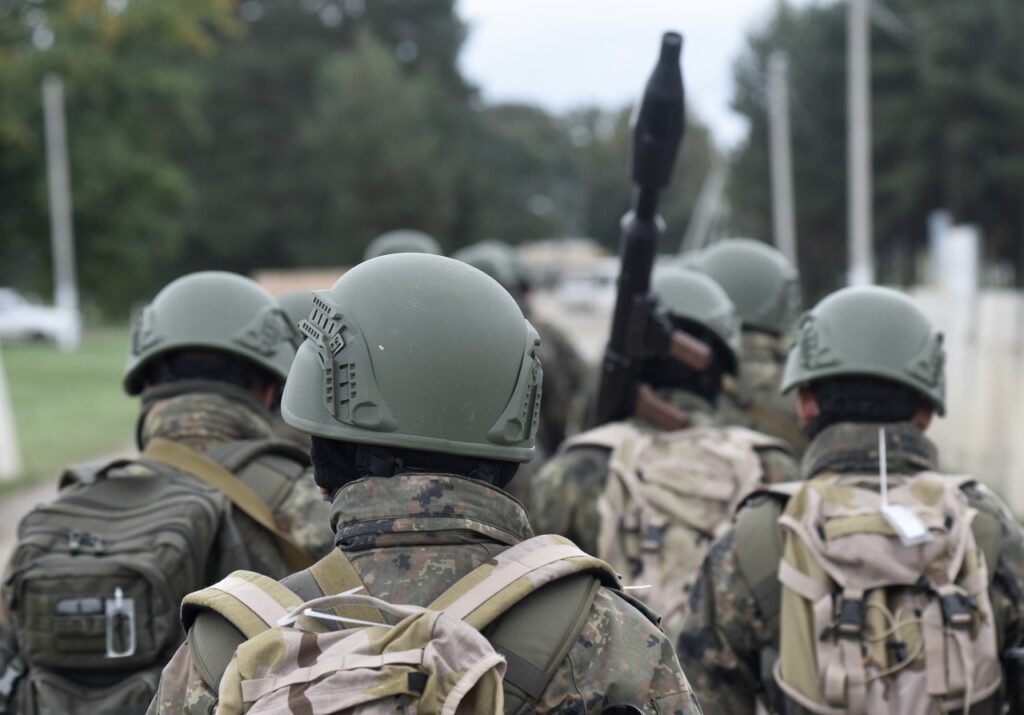
The F-22 Raptor: Aged, but Not Past Her Prime
In a potential near-peer conflict with China in the Indo-Pacific, the F-22 Raptor would play a main role in winning control of the skies from the Chinese air force.
Understanding the aircraft’s central role in American strategy, a group of Airmen devised a new way to maintain the stealth fighter jet.
Improved Maintenance Equals More Lethal Fighter Jets
Air Force maintenance troops have developed customized stands at Joint Base Pearl Harbor-Hickam, thus revolutionizing maintenance for the F-22 Raptor stealth fighter jet.
The new customized stands will help maintenance personnel access some of the stealth aircraft’s hard-to-reach areas more easily, safely, and efficiently.
“Our Airmen needed something more reliable and user-friendly than ladders and makeshift platforms,” Air Force Master Sgt. Scott Kamali’i, the 154th Maintenance Squadron’s low observable aircraft structural maintenance supervisor, said. “We saw an opportunity to solve a longstanding issue and improve working conditions for maintainers.”
It took the Airmen almost five years to complete the project and they worked in collaboration with the National Guard.
“Maintenance on the F-22 comes with unique challenges, and we knew we couldn’t settle for one-size-fits-all solutions,” Yockeman said. “We needed something designed with our maintainers in mind.”
“These stands are a game changer,” Master Sgt. Kamali’i added. “They’re not just safer, but they also reduce downtime, enhance efficiency, and improve the overall quality of life for our maintainers.”
The F-22 Raptor may have been the first stealth fighter jet to take to the skies, but, two decades after its operational debut, it is an aging aircraft.
So, quicker and more efficient ways to maintain the stealth fighter jet are welcome.
“The maintenance stands are tailored to the F-22’s sleek and angular profile, wrapping around the sharp wings and fuselage and creating a stable and spacious work platform. The design minimizes the risk of accidental damage to the aircraft while enabling maintainers to move freely and safely perform their duties,” the National Guard stated about the new maintenance stands.
“This initiative didn’t just address a safety issue,” Air Force Major Zachary Chang, the 154th Maintenance Squadron’s deputy commander, said. “It set the stage for future advancements in how we approach maintenance. It’s a testament to the dedication and ingenuity of our Airmen.”
Lockheed Martin, the manufacturer, shut down the production line of the F-22 Raptor in 2011, only six years after the aircraft became operational. Congress was anxious to get the much-anticipated F-35 Lightning II stealth fighter jet rolling, and the F-22 production line was getting in the way.
The Air Force, the only F-22 operator in the world, received an estimated 186 aircraft. Today, long years of operations have dwindled that number. Although the actual availability remains classified, the F-22, after all, is the Air Force’s primary air superiority fighter jet, it is estimated that only a fraction of the delivered aircraft.
Stavros Atlamazoglou is a seasoned defense journalist specializing in special operations and a Hellenic Army veteran (national service with the 575th Marine Battalion and Army HQ). He holds a BA from Johns Hopkins University and an MA from Johns Hopkins School of Advanced International Studies (SAIS). His work has been featured in Business Insider, Sandboxx, and SOFREP.
Image Credit: Shutterstock.


